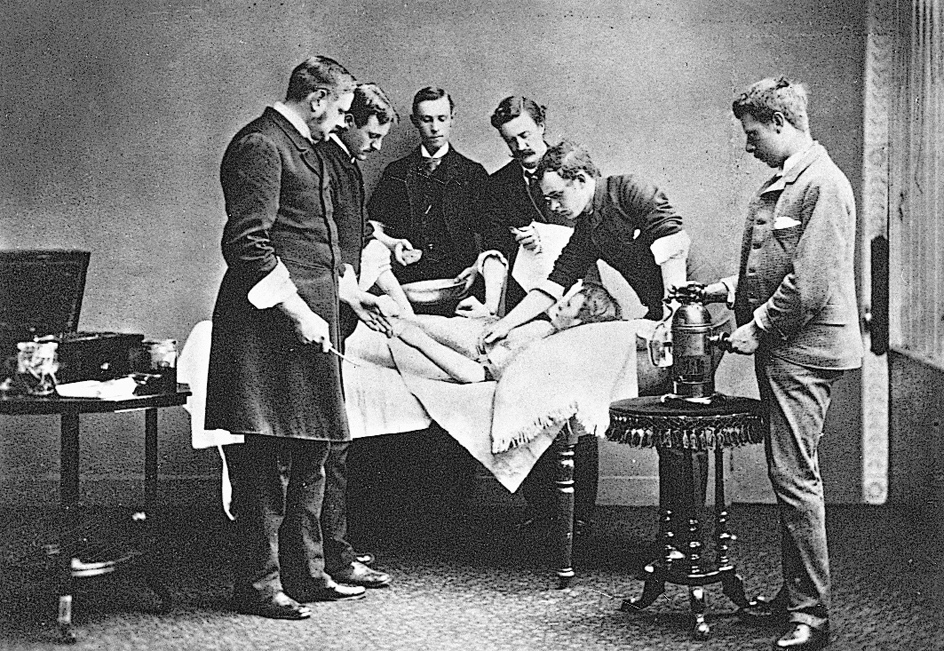Antiseptic is a substance that destroys—or stops the growth of—germs on living tissue. Antiseptics are applied to skin and mucous membranes to help prevent infection. They must be strong enough to fight germs but mild enough not to irritate sensitive tissues. Antiseptics differ from disinfectants and antibiotics. Disinfectants are chemicals that destroy germs on nonliving objects, and antibiotics are drugs that treat infection after it occurs.
Kinds of antiseptics.
There are hundreds of antiseptic products, including creams, mouthwashes, ointments, powders, shampoos, soaps, solutions, and sprays. Each of these products contains a germ-fighting chemical that carries out the antiseptic action. Such chemicals include alcohols, dyes, iodophors, mercurials, phenols, and salicylamides. The kinds and amounts of chemicals that are used depend chiefly on the type of product.
The use of antiseptics.
Physicians use special antiseptic cleansers to scrub their hands and to wash the patient’s skin before surgery. Doctors also spray serious wounds with antiseptics in order to keep them from becoming infected.
Antiseptic products are used in first-aid treatment of cuts and other wounds, but many physicians and health experts question their use in such cases. These authorities believe washing such injuries with soap and warm water is as effective as any other antiseptic that can be bought without a prescription. An injury that requires more care should be treated by a physician.
The germ-fighting chemicals in antiseptics can cause serious side effects. These effects include a rash or some other allergic reaction, or damage to the skin. But medical experts generally believe antiseptics are safe if used as directed by the manufacturer. In the United States, the Food and Drug Administration (FDA), an agency of the federal government, regulates the manufacture and sale of antiseptics.
History.
People used vinegar and wine as antiseptics as early as 2,500 years ago, long before the discovery that germs cause disease. Several hundred years ago, surgeons noticed that untreated battle wounds and surgical incisions quickly began to smell like rotting flesh. To prevent this odor, they treated the tissues with a variety of substances that became known as antiseptics. The word comes from two Greek words—anti, meaning against, and sepsis, meaning decay.
Through the centuries, a number of fluids and potions were used as antiseptics. In addition to vinegar and wine, they included brandy, mercury, pitch, tar, and turpentine. Some were powerful germ killers but would also harm living tissue. As a result, many patients were saved from infection but died from the treatment.
During the mid-1800’s, Ignaz P. Semmelweis, a Hungarian physician, showed that a mild solution of lime chloride helped prevent infection during childbirth. Doctors who rinsed their hands in the solution kept infection from spreading among their patients. In the mid-1860’s, Sir Joseph Lister, an English surgeon, pioneered the use of antiseptics in surgery. He used carbolic acid to help prevent infection in incisions. The work of Semmelweis and Lister led to the creation of many mild but effective antiseptics. Some of these products, such as alcohol and iodine, are still widely used.

